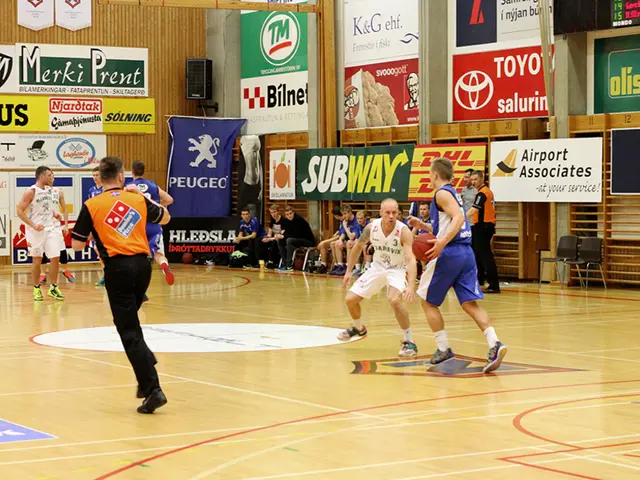Eurozone Economy Struggles Amidst Growing Challenges
The economy in the Eurozone continues to face challenges, with recent PMI data suggesting a minor improvement despite being stuck in a recessionary territory. S&P Global's survey of over 4,000 companies revealed a slight rise in the Purchasing Managers' Index (PMI), climbing 0.6 points to 47.1 points in November. However, with this still below the threshold of 50 points, the economy remains in a slump .
This recessionary trend can primarily be attributed to the decline in new orders, although at a less severe rate than before - a modest improvement. The Manufacturing PMI remains below 50 points, suggesting ongoing contraction, particularly in Germany . The service sector, while still showing growth, has slumped slightly in January and is expanding at a slower pace .
Cyrus de la Rubia, chief economist at Hamburg Commercial Bank (HCOB), expressed his concerns, describing the Eurozone economy as "sinking deeper and deeper into the mud." The recent data indicates that both the manufacturing industry and the service sector have shrunk at a relatively consistent pace .
Employment growth in the service sector has almost stagnated. Although the HCOB's chief economist anticipates an expected rise in unemployment in the coming months, the labor market has thus far exhibited remarkable resilience .
The lingering recessionary trend in the Eurozone economy is not just limited to the loss of new orders. The region is also grappling with geopolitical risks, including the escalating trade tensions between the U.S. and China, as well as conflicts like the ones in the Middle East and the war between Russia and Ukraine .
There is also a significant increase in price pressures across Europe's largest economy, Germany, driven by soaring costs and steep inflation, which has reached its highest level in 11 months . These conditions have caused a dichotomy, with rising services activity and falling manufacturing production.
Structural weaknesses within Germany's manufacturing and energy-intensive sectors have contributed to the stagnation of the country's economy for the past three years. The Bundesbank's projections point towards a 0.2% GDP contraction in 2025, contrasting heavily with other European economies .
In response, the European Central Bank (ECB) plans to continue cutting interest rates in 2025, with moderate cuts of 0.25 percentage points each . Although this move is intended to stimulate economic growth, certain economists argue that the ECB acts too slow in addressing the Eurozone's stagnant economy.
In conclusion, the Eurozone economy faces a myriad of challenges that keep it locked in a fragile and precarious growth environment, as indicated by the latest PMI data.
Sources:
: : : : :
Enrichment Data:
- shows that although the services sector is still expanding, its growth has slowed in January. The services PMI dipped by 0.2 points, indicating a tender pace of expansion that falls below the robust growth seen in previous periods .
- indicates that geopolitical risks pose significant threats to Europe's economies, including potential trade wars and broader conflicts. For instance, the ongoing tension between the U.S. and China, as well as conflicts like the ones in the Middle East and the war between Russia and Ukraine, could have a negative impact on the Eurozone economy .
- reveals a further rise in price pressures across Germany, driven by steeply rising costs and an increase in inflation. This is evident in the highest inflation rate in 11 months, which contributes to a dichotomy between rising services activity and falling manufacturing production .
- illustrates that Germany, the eurozone's largest economy, has stagnated for three years due to structural weaknesses in manufacturing and energy-intensive sectors. The Bundesbank forecasts a 0.2% contraction in German GDP for 2025, which contrasts sharply with other European economies .








